7 MIN READ
Determining Canola Growth Stages
June 15, 2021
Determining the correct growth stage of a canola crop helps farmers with management decisions for several production practices, including herbicide timing, fungicide timing and harvest timing. Canola growth stages can be described by using the BBCH scale (Table 1). This scale was developed to describe the ten principal growth stages which are further sectioned into secondary stages. Growth stages may overlap when the crop is completing one growth stage at the same time the next growth stage begins. The growth stages described below are for individual plant assessments. Field scale growth stages across a field can be extremely variable for canola. Growth stages can overlap so the principal growth stage is determined when over 50% of the plants reach a growth stage.1

Germination - Growth Stage 0
Canola can emerge four to 15 days after seeding depending on heat, moisture, seedbed, and seed condition. Canola can germinate when the soil temperature reaches 37oF, but 50oF is ideal. Temperature is one of the most important environmental factors regulating growth. The root emerges from the seed followed by the shoot and seed leaves (cotyledons).1 The growing point is now above the soil and vulnerable to early-season environmental stress such as frost.
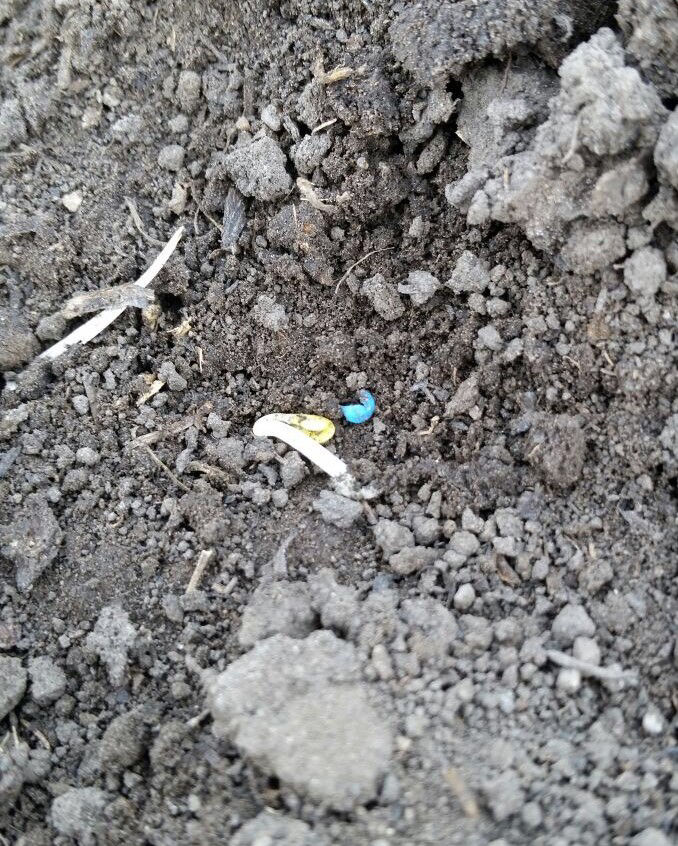
Leaf Development - Growth Stage 1
This stage begins with the unfolding of the cotyledons (BBCH 10, Figure 3). Leaf stages are then identified by the number of leaves unfolded on the plant (Figure 4).2 The first true leaf may appear four to eight days after emergence.1 Growth can be slowed by cool temperatures, dry or saturated soil conditions, insect feeding, or disease. The crop should be kept weed free at this stage. Crop loss due to weeds is most substantial when weeds are present from emergence to the two-leaf stage of canola.1 Leaves continue to emerge forming a rosette (Figure 5). Uptake of nitrogen and potassium rapidly increase at the five-leaf stage and remain high through 50% flowering.1 The next growth stage, stem elongation, may begin by the six-leaf stage.
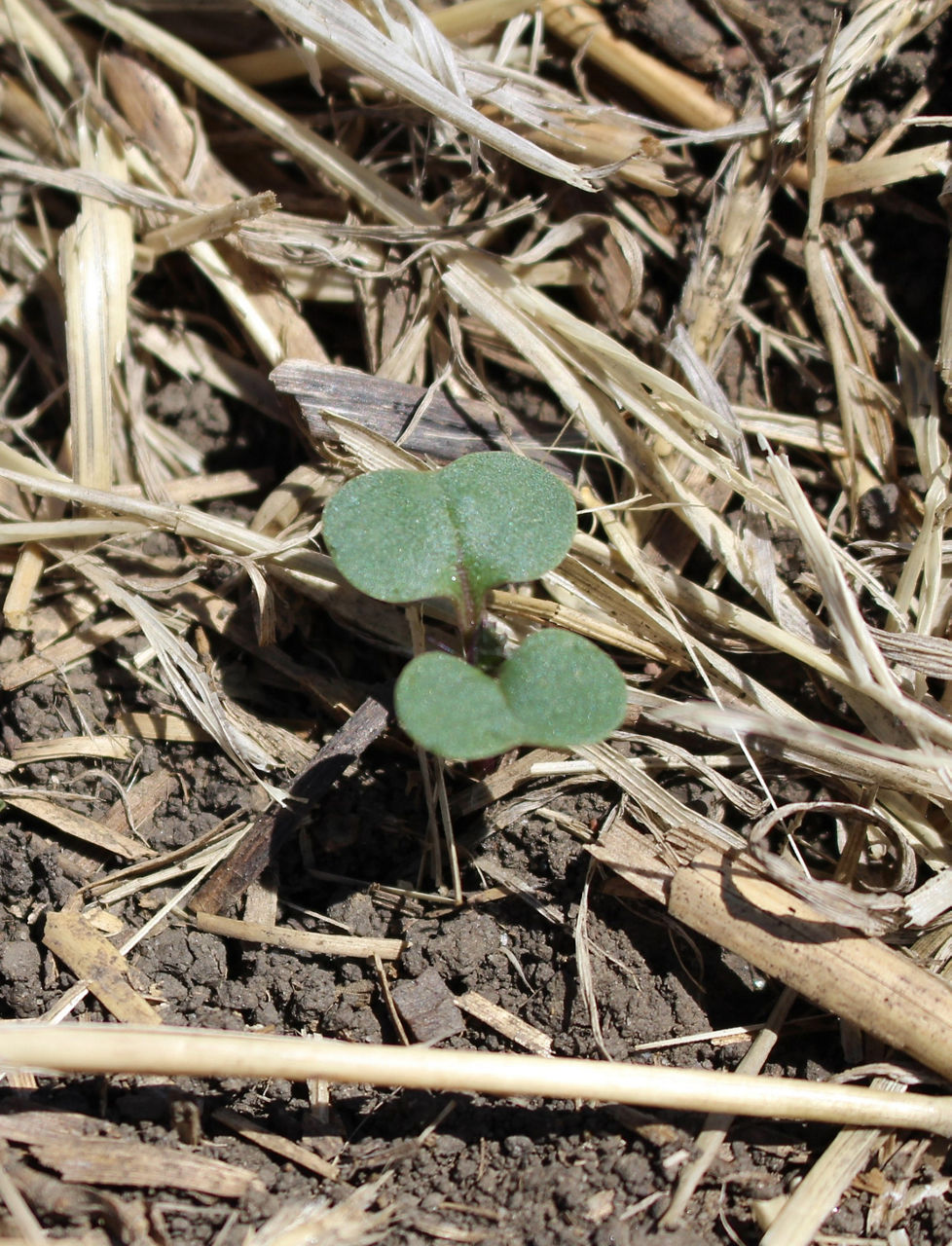
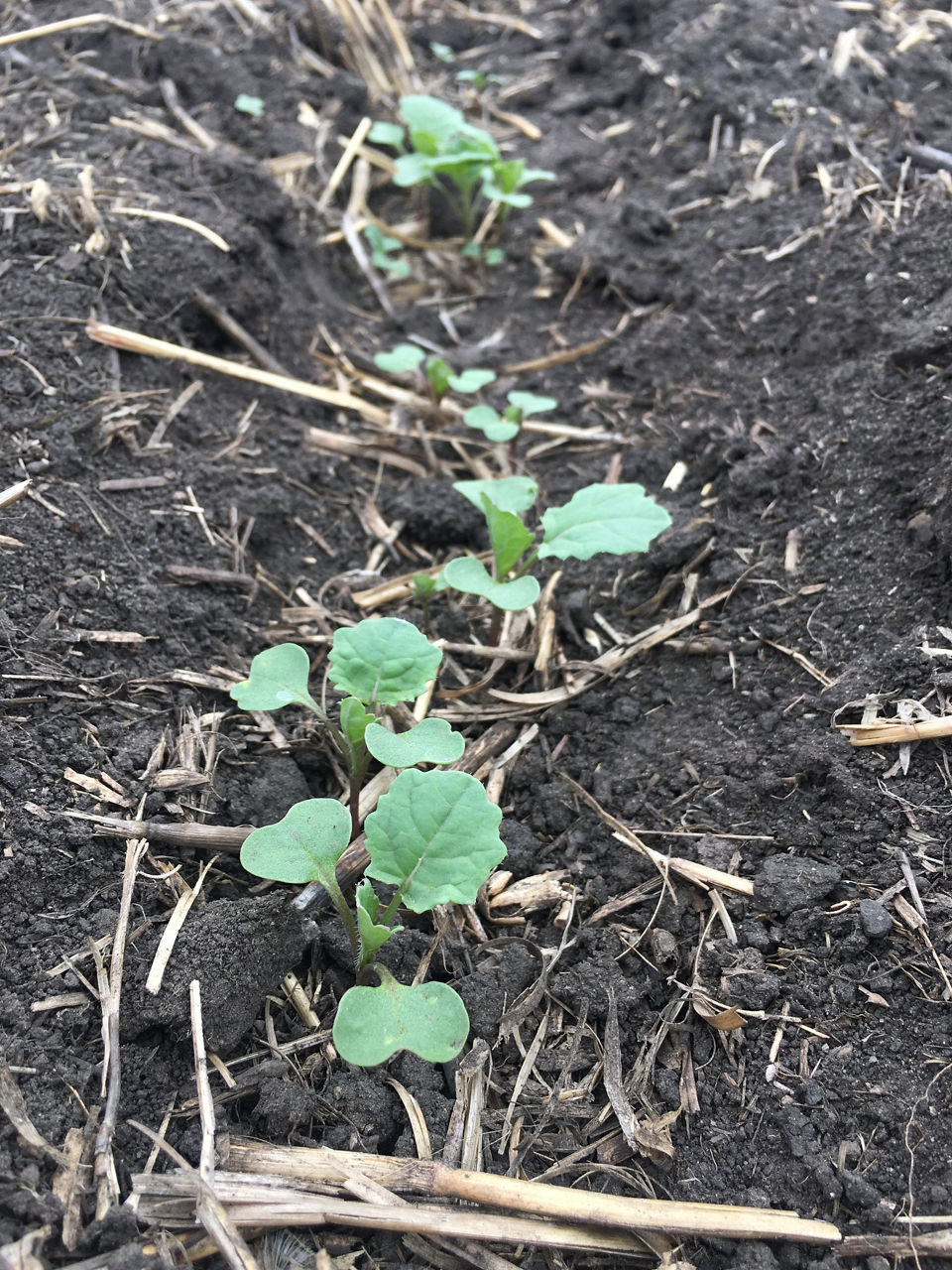
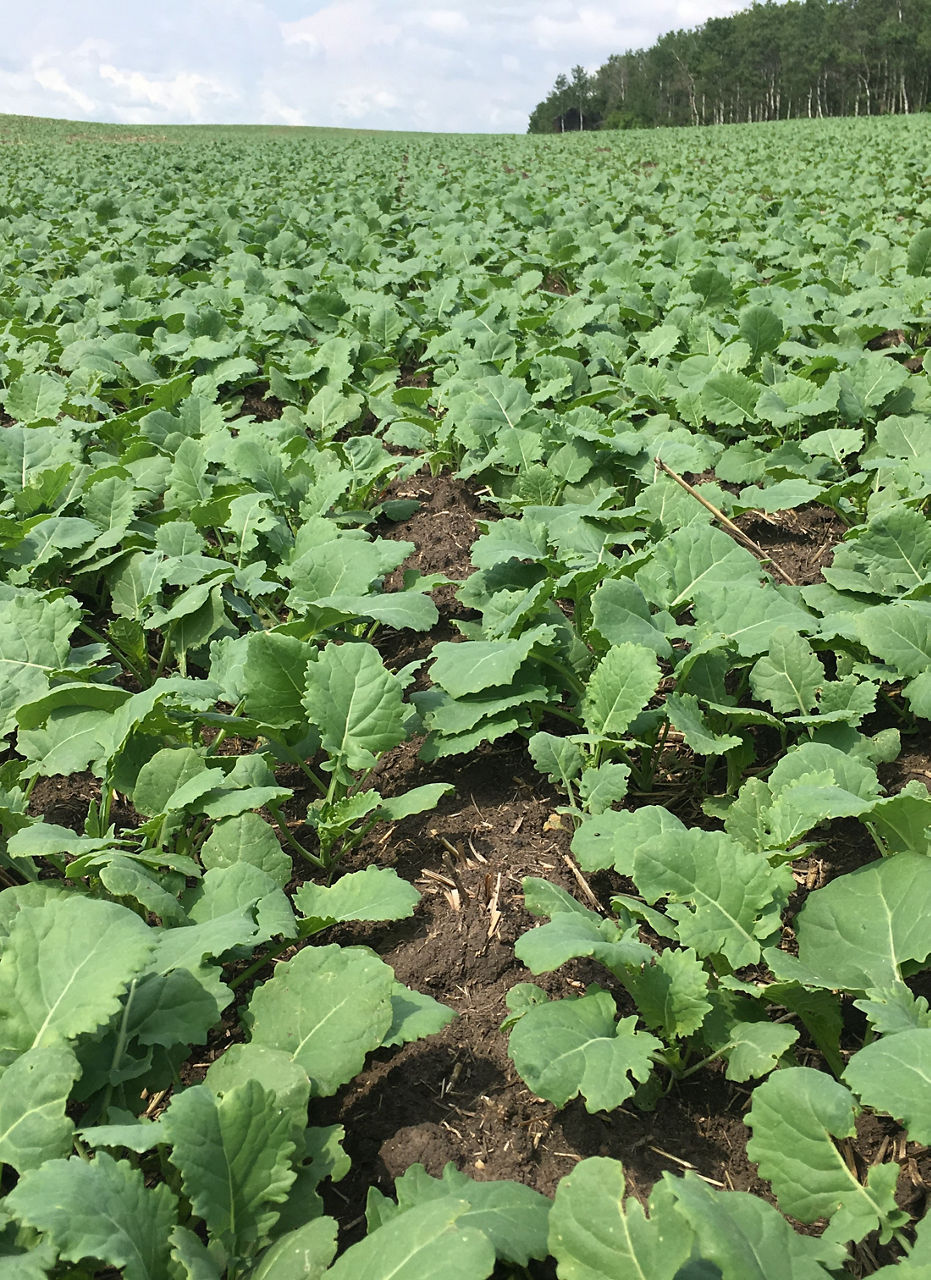

Stem Elongation - Growth Stage 3
Stems begin to emerge from the rosette. Each secondary stage is identified by the number of visible internodes. Budding often overlaps with stem elongation and can begin when the first internode is visible.
Inflorescence Emergence (Budding) - Growth Stage 5
This is the beginning of the reproductive growth stages. The bud can be present in the rosette as the first internode appears on the stem. At BBCH 50, flower buds are present though they may not be visible.2 Flower buds become visible at BBCH 51 and the first petals become visible, enclosed in a yellow bud, at BBCH 59. Flowering is soon to follow.
Flowering - Growth Stage 6
Flowering begins when the first flowers open (Figure 7). The secondary stages of flowering are based on the percentage of flowers open on the main raceme.2 Flowering can advance by three to five flowers opening per day. Canola typically flowers for two to three weeks but if conditions are favorable this can vary dramatically.1 If a fungicide is planned, recommendations for application are typically between 20 and 50% flowering before petals fall. Full flowering is when 50% of the flowers on the main raceme are open with older petals falling. This is when the maximum plant height is also achieved.1 After this stage, flowering begins to decline and the field appears less yellow. Most petals have fallen by the 70% flowering stage.2
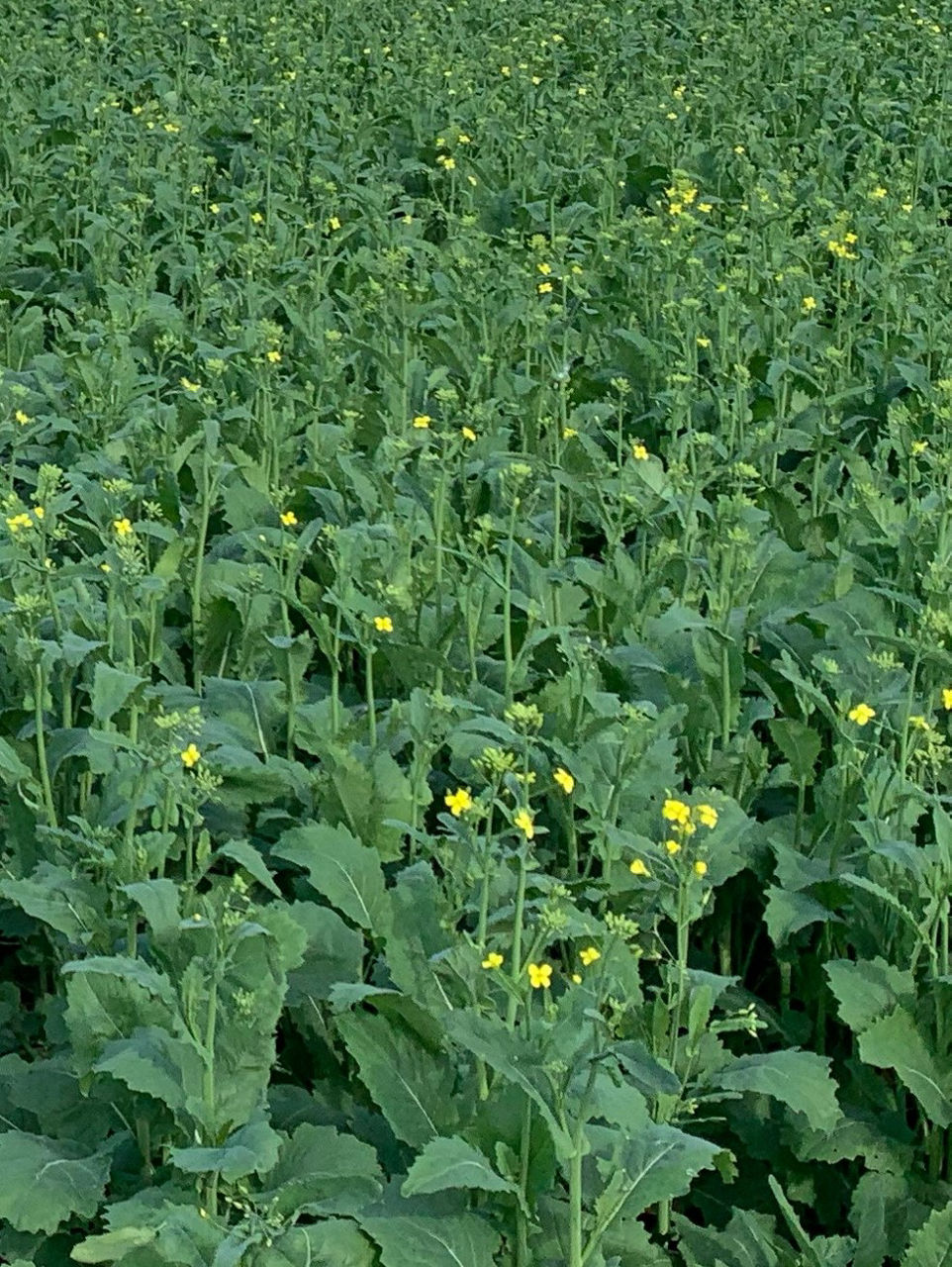
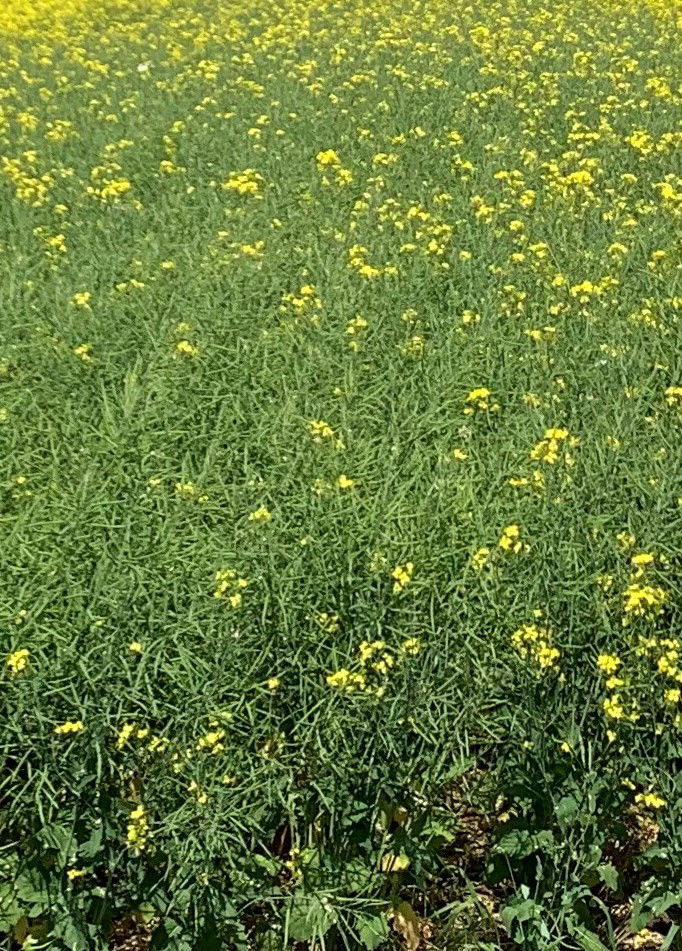
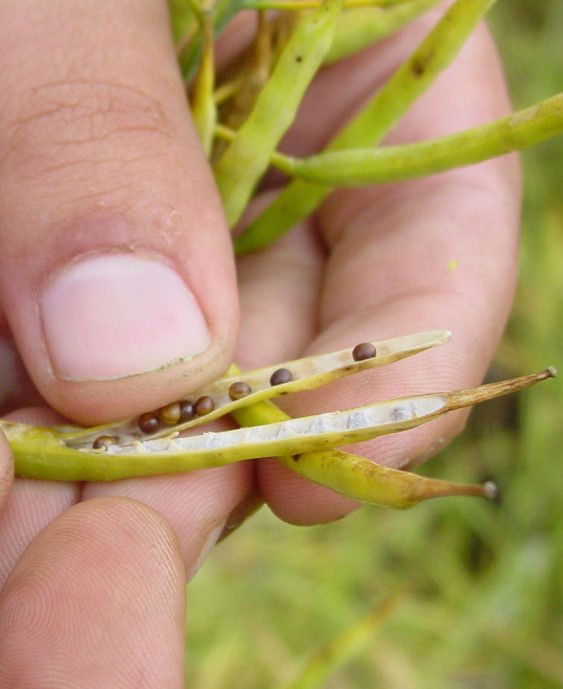
Development of Seeds and Pods - Growth Stage 7
Pods begin to develop while the plant is still flowering. Typically, 10% of pods have reached their final size when the plants are at the 70% flowering stage. (BBCH 67 & BBCH 71).1
Ripening - Growth Stage 8
This stage overlaps with the previous stage with seed fill beginning when approximately 60% of pods have reached their final size. The ripening stage begins when the seed is green and filling the pod cavity and ends when the pod is ripe with dark and hard seed.2 When seeds reach physiological maturity, they stop pod fill and begin losing moisture and changing color from green to brown.1 The seed color change percentage can be determined by assessing the main raceme in portions. If the seeds on the bottom 30% of the main raceme have changed color, then the stage is 30% seed color change (BBCH 83). If seeds on 60% of the main raceme have changed color, then the stage is 60% seed color change (BBCH 86). Seed color change occurs at an average rate of 10% every two to three days. Some canola plants may have very small main racemes and many branches. If this is the case, assess the branches and ensure the seeds in these branches are firm prior to swathing.1
Senescence - Growth Stage 9
This is the final growth stage where the plant dies naturally if not desiccated or swathed.
Sources:
1 Canola Council of Canada. Canola Encyclopedia. https://www.canolacouncil.org/canola-encyclopedia/.
2 Meier, U. 2018. Growth stages of mono- and dicotyledonous plants. BBCH Monograph. Quedlinburg 2018. Open Agrar Repositorium. 10.5073/20180906-074619 https://www.julius-kuehn.de/en/jki-publication-series/bbch-scale/.
1036_S1